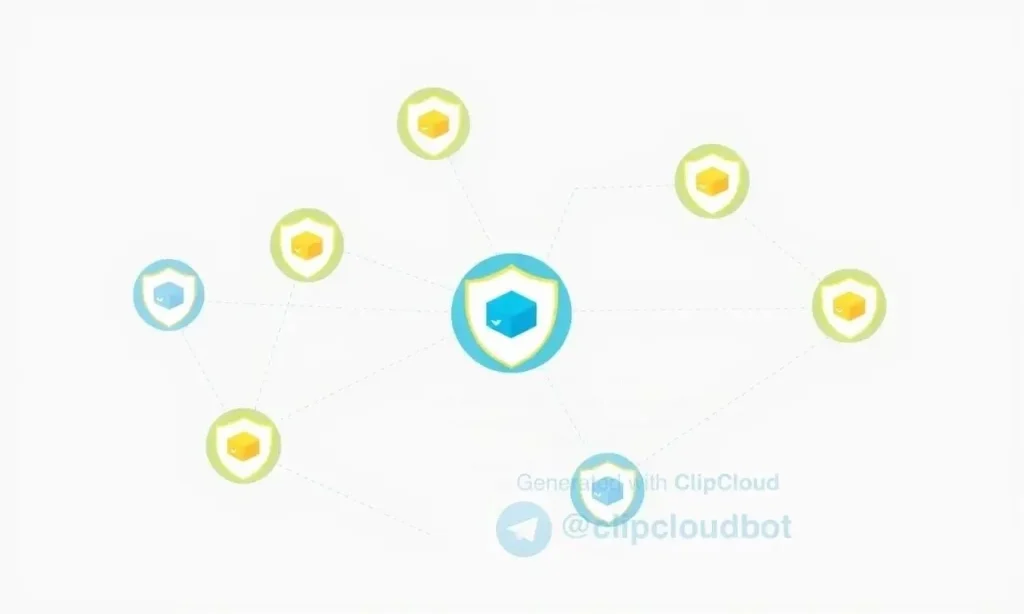Five Essential Cybersecurity Steps for SMEs
Is your small business a cybercriminal’s dream? Learn 5 essential cybersecurity steps to protect your SME from attacks and keep your data safe! Don’t wait until it’s too late!

In today’s digital landscape‚ Small and Medium-sized Enterprises (SMEs) are increasingly vulnerable to cyberattacks. Often lacking the robust security infrastructure of larger corporations‚ SMEs represent attractive targets for cybercriminals seeking financial gain or sensitive data. Implementing fundamental cybersecurity measures is no longer optional‚ but a critical necessity for survival and continued success. This article outlines five essential steps that every SME should take to protect itself from potential threats and safeguard its valuable assets.
Understanding the Cybersecurity Landscape for SMEs
Cyberattacks are becoming more sophisticated and frequent. SMEs need to understand the specific risks they face and take proactive steps to mitigate them. This involves understanding common threat vectors and implementing appropriate security controls.
Common Threats Faced by SMEs
- Phishing Attacks: Deceptive emails or messages designed to steal credentials or install malware.
- Malware Infections: Viruses‚ worms‚ and ransomware that can disrupt operations and compromise data.
- Weak Passwords: Easily guessable passwords that allow unauthorized access to systems and accounts.
- Insider Threats: Malicious or negligent actions by employees or contractors.
- Data Breaches: Unauthorized access to sensitive data‚ resulting in financial losses and reputational damage.
5 Essential Cybersecurity Measures
- Implement Strong Password Policies: Enforce the use of complex passwords and multi-factor authentication.
- Regularly Update Software and Systems: Patch vulnerabilities promptly to prevent exploitation.
- Install and Maintain Antivirus and Anti-Malware Software: Protect against malware infections and other threats.
- Educate Employees on Cybersecurity Best Practices: Raise awareness about phishing‚ social engineering‚ and other scams.
- Create a Data Backup and Recovery Plan: Ensure business continuity in the event of a data loss incident.
Comparative Table: Cybersecurity Solutions
| Feature | Antivirus Software | Firewall | Intrusion Detection System (IDS) |
|---|---|---|---|
| Primary Function | Detects and removes malware | Blocks unauthorized network access | Monitors network traffic for malicious activity |
| Protection Type | Endpoint protection | Network perimeter protection | Network monitoring and alerting |
| Typical Implementation | Installed on individual devices | Installed on network gateways | Installed on network servers and devices |
| Cost | Relatively low cost | Moderate cost | Can be expensive‚ depending on complexity |
| Maintenance | Requires regular updates | Requires configuration and monitoring | Requires expert configuration and monitoring |
FAQ: Cybersecurity for SMEs
Q: Why is cybersecurity important for my small business?
A: Cybersecurity is crucial because it protects your business from financial losses‚ reputational damage‚ and legal liabilities resulting from data breaches and cyberattacks. It also ensures business continuity and customer trust;
Q: How much should I spend on cybersecurity?
A: The amount you should spend on cybersecurity depends on the size and complexity of your business‚ the sensitivity of your data‚ and the potential impact of a cyberattack. A general rule of thumb is to allocate a percentage of your IT budget to cybersecurity.
Q: Where can I get help with cybersecurity?
A: There are many resources available to help SMEs with cybersecurity‚ including cybersecurity consultants‚ managed security service providers (MSSPs)‚ and government agencies that offer guidance and support.
Q: How often should I update my cybersecurity measures?
A: Cybersecurity is an ongoing process‚ not a one-time fix. You should continuously monitor your systems‚ update your security measures‚ and train your employees to stay ahead of evolving threats.
Q: What is multi-factor authentication?
A: Multi-factor authentication (MFA) is a security system that requires more than one method of authentication from independent categories of credentials to verify the user’s identity for a login or other transaction. Common MFA methods include passwords‚ security questions‚ one-time codes sent to a mobile device‚ and biometric scans.
Developing a Cybersecurity Incident Response Plan
The implementation of proactive security measures is only one facet of a comprehensive cybersecurity strategy. Equally critical is the development and maintenance of a robust incident response plan. This plan serves as a roadmap for effectively managing and mitigating the impact of a successful cyberattack. A well-defined incident response plan minimizes downtime‚ protects sensitive data‚ and facilitates a swift return to normal operations. The plan should encompass a clear chain of command‚ detailed procedures for identifying and containing incidents‚ and protocols for communicating with stakeholders.
Key Components of an Incident Response Plan
- Identification: Establishing methods for detecting and classifying security incidents. This includes monitoring system logs‚ network traffic‚ and user activity.
- Containment: Isolating affected systems to prevent the spread of malware or further data compromise. This may involve disconnecting systems from the network or implementing temporary access restrictions.
- Eradication: Removing malware‚ vulnerabilities‚ and other threats from affected systems. This may require system restoration‚ patching‚ and malware removal tools.
- Recovery: Restoring systems and data to their pre-incident state. This involves data recovery‚ system rebuilding‚ and verification of functionality.
- Lessons Learned: Conducting a post-incident analysis to identify weaknesses in security posture and improve future response efforts. This includes documenting the incident‚ analyzing the causes‚ and implementing corrective actions.
The Importance of Employee Training and Awareness
Human error remains a significant factor in many cybersecurity incidents. Therefore‚ investing in comprehensive employee training and awareness programs is paramount. Employees should be educated on how to identify phishing emails‚ social engineering tactics‚ and other common threats. Regular training sessions and simulated phishing exercises can help reinforce best practices and improve employee vigilance. Furthermore‚ a culture of security awareness should be fostered‚ where employees feel empowered to report suspicious activity and adhere to established security policies.
Training Topics for Employees
- Phishing Awareness: Recognizing and avoiding phishing emails‚ including identifying suspicious senders‚ links‚ and attachments.
- Password Security: Creating strong passwords‚ avoiding password reuse‚ and using password managers.
- Social Engineering: Understanding social engineering tactics and avoiding manipulation by attackers.
- Data Security: Protecting sensitive data‚ including proper handling‚ storage‚ and disposal.
- Mobile Security: Securing mobile devices and protecting data when working remotely.
Beyond the Basics: Advanced Security Considerations
While the aforementioned measures represent fundamental building blocks‚ SMEs should also consider implementing more advanced security controls as their business grows and their threat landscape evolves. These advanced measures may include vulnerability scanning‚ penetration testing‚ security information and event management (SIEM) systems‚ and intrusion prevention systems (IPS). Consulting with cybersecurity professionals can help SMEs identify and implement the most appropriate advanced security controls for their specific needs and risk profile.
Advanced Security Measures
- Vulnerability Scanning: Regularly scanning systems for known vulnerabilities and patching them promptly.
- Penetration Testing: Simulating a cyberattack to identify weaknesses in security defenses.
- Security Information and Event Management (SIEM): Collecting and analyzing security logs from various sources to detect suspicious activity.
- Intrusion Prevention Systems (IPS): Automatically blocking malicious traffic and preventing intrusions.
- Data Loss Prevention (DLP): Implementing measures to prevent sensitive data from leaving the organization.
Building a Resilient Cybersecurity Posture: A Continuous Improvement Approach
Cybersecurity is not a static endeavor; it demands a proactive and adaptive approach. The threat landscape is in perpetual flux‚ with adversaries constantly refining their tactics and exploiting new vulnerabilities. Therefore‚ a resilient cybersecurity posture necessitates continuous monitoring‚ assessment‚ and improvement. Regular security audits‚ penetration testing‚ and vulnerability assessments are crucial for identifying weaknesses and ensuring that security controls remain effective. Furthermore‚ staying abreast of the latest threat intelligence and emerging security technologies is essential for anticipating and mitigating future risks. This cyclical process of assessment‚ adaptation‚ and implementation forms the bedrock of a robust and enduring cybersecurity strategy.
Essential Elements of a Continuous Improvement Program
- Regular Security Audits: Conduct thorough and independent assessments of security policies‚ procedures‚ and controls to identify gaps and weaknesses.
- Penetration Testing: Simulate real-world cyberattacks to evaluate the effectiveness of security defenses and identify vulnerabilities that could be exploited.
- Vulnerability Assessments: Scan systems and applications for known vulnerabilities and prioritize remediation efforts based on risk.
- Threat Intelligence Monitoring: Stay informed about the latest threats‚ vulnerabilities‚ and attack trends to proactively identify and mitigate risks.
- Security Awareness Training: Regularly train employees on security best practices and emerging threats to reduce the risk of human error.
- Incident Response Drills: Conduct simulated incident response exercises to test the effectiveness of the incident response plan and improve coordination among team members.
- Policy Review and Updates: Regularly review and update security policies and procedures to reflect changes in the threat landscape‚ business operations‚ and regulatory requirements.
Leveraging Cloud Security Best Practices
For SMEs increasingly reliant on cloud services‚ ensuring the security of data and applications hosted in the cloud is of paramount importance. Cloud providers offer a range of security features and services‚ but ultimately‚ the responsibility for securing data and applications in the cloud rests with the customer. Adhering to cloud security best practices‚ such as enabling multi-factor authentication‚ implementing data encryption‚ and configuring access controls‚ is crucial for mitigating cloud-related security risks. Furthermore‚ understanding the shared responsibility model between the cloud provider and the customer is essential for ensuring comprehensive security coverage. Engaging cloud security experts can provide valuable guidance in navigating the complexities of cloud security and implementing appropriate security controls.
Key Considerations for Cloud Security
- Data Encryption: Encrypt data at rest and in transit to protect it from unauthorized access.
- Access Controls: Implement strict access controls to limit access to sensitive data and applications to authorized personnel only.
- Multi-Factor Authentication: Enable multi-factor authentication for all user accounts to enhance security and prevent unauthorized access.
- Security Monitoring: Monitor cloud environments for suspicious activity and potential security threats.
- Incident Response: Develop a cloud-specific incident response plan to address security incidents in the cloud environment.
- Compliance: Ensure compliance with relevant regulatory requirements and industry standards for data security and privacy.
The Legal and Regulatory Landscape of Cybersecurity
Cybersecurity is not solely a technical matter; it is also subject to a complex web of legal and regulatory requirements. Depending on the industry and the type of data handled‚ SMEs may be subject to various laws and regulations‚ such as the General Data Protection Regulation (GDPR)‚ the California Consumer Privacy Act (CCPA)‚ and the Health Insurance Portability and Accountability Act (HIPAA). Compliance with these regulations requires implementing appropriate security measures to protect sensitive data and demonstrating due diligence in protecting against cyberattacks. Failure to comply with these regulations can result in significant fines‚ legal liabilities‚ and reputational damage. Therefore‚ understanding the legal and regulatory landscape is essential for ensuring that cybersecurity efforts are aligned with legal obligations and business objectives. Consulting with legal counsel specializing in cybersecurity can provide valuable guidance in navigating the regulatory complexities and ensuring compliance.




